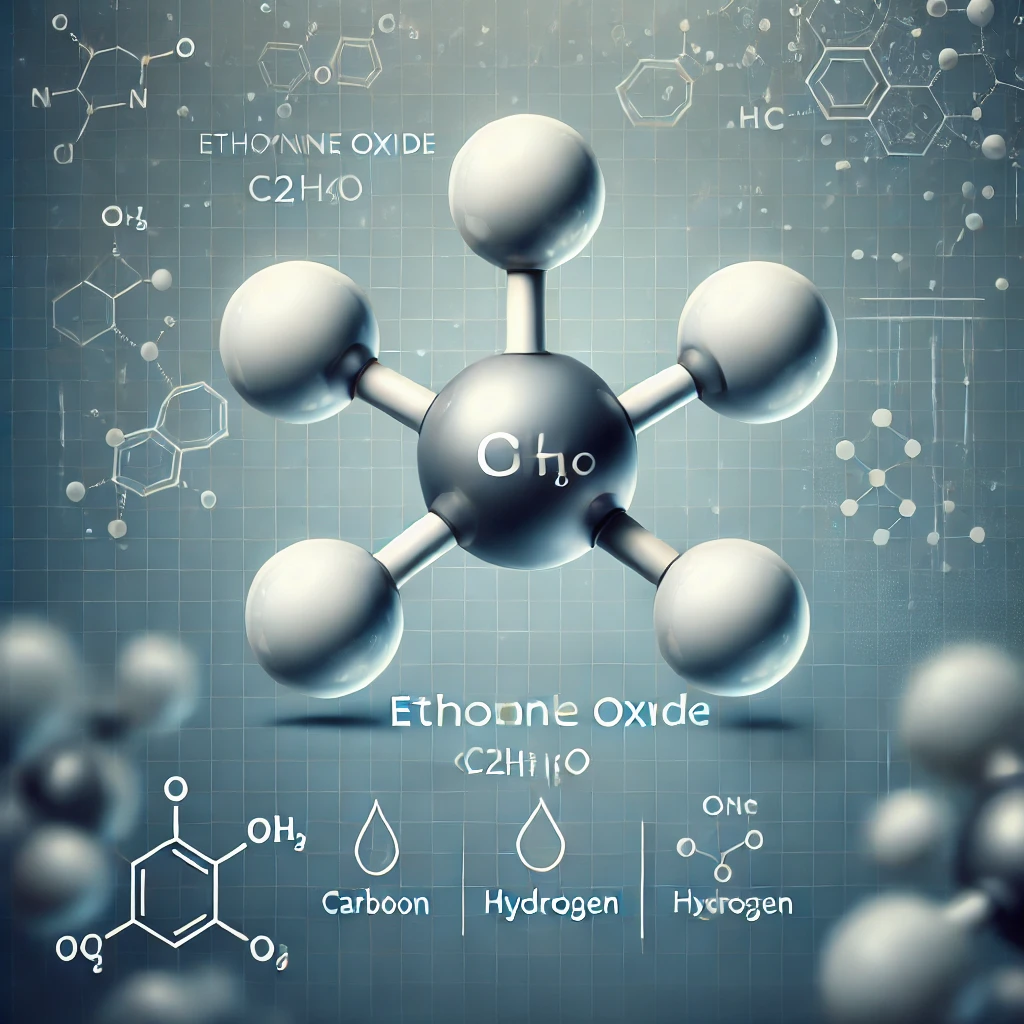C2H4O-Methylene Oxide
Methylene oxide, ethylene oxide, C₂H₄O, epoxide, sterilization gas, glycol production, flammable chemical, carcinogenic compound, fumigant
Methylene Oxide (C₂H₄O) – Properties, Applications, and Safety Information
Also Known As: Ethylene Oxide
Chemical Name: Methylene Oxide
Chemical Formula: C₂H₄O
Chemical Class: Epoxides, Ethers, Organic Compounds
Physical and Chemical Properties
-
Molecular Weight: 44.05 g/mol
-
Boiling Point: 10.7 °C
-
Melting Point: –111.3 °C
-
Density: 0.872 g/cm³ (liquid at 0 °C)
-
Solubility: Miscible with water, alcohols, ethers, and many organic solvents
-
Reactivity: Highly reactive; undergoes polymerization and reacts violently with acids, alkalis, and oxidizers
-
Stability: Extremely volatile and flammable; decomposes under heat or pressure
Applications
✅ Sterilization – Widely used for sterilizing medical and surgical equipment
✅ Chemical synthesis – Intermediate for ethylene glycol and other glycol ethers
✅ Pharmaceuticals – Used in the synthesis of active ingredients
✅ Textile and plastics – Involved in the production of surfactants and detergents
✅ Agricultural chemicals – Precursor for pesticides and fumigants
Safety Information
⚠️ Carcinogenic and mutagenic – Classified as a human carcinogen; causes genetic mutations
❗ Flammable and explosive – Forms explosive mixtures with air at low concentrations
❗ Health hazard – Inhalation may cause respiratory distress, dizziness, and long-term organ damage
✅ Storage – Store in pressure-rated, explosion-proof containers, in cool and well-ventilated areas
✅ PPE: Flame-resistant gloves, chemical goggles, full-face respirator, anti-static protective clothing

